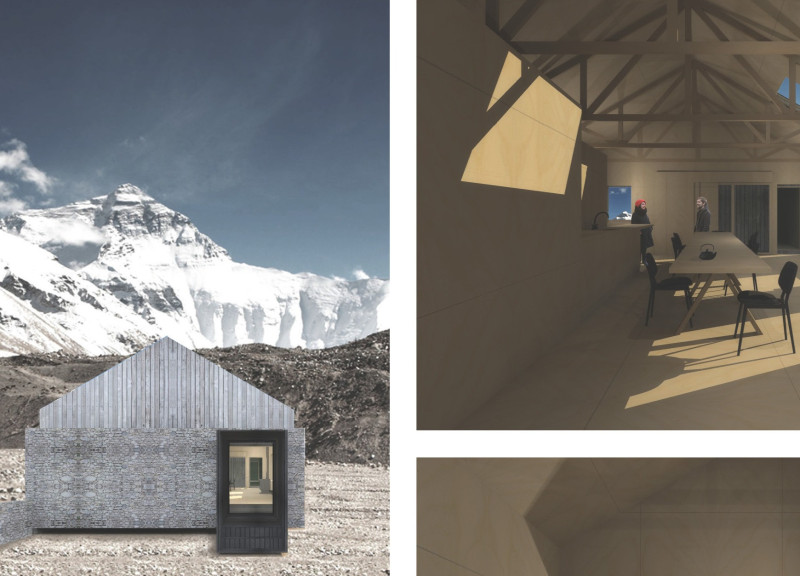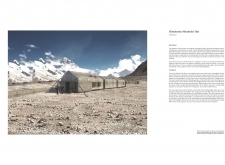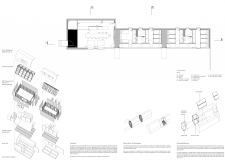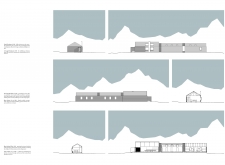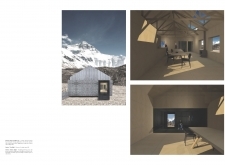5 key facts about this project
# Architectural Design Analysis: Himalayan Mountain Hut
## Overview
The Himalayan Mountain Hut is situated in the high-altitude regions of the Himalayas, where it addresses the unique climatic, cultural, and logistical challenges inherent to mountainous environments. The design integrates contemporary architectural principles with local vernacular styles, emphasizing durability and functional relevance. The primary objective is to create a shelter that provides safe, insulated accommodations, fostering communal interaction among visitors and residents.
## Spatial Organization and User Engagement
The layout of the hut is strategically designed to encourage social interaction. A central common room functions as a gathering space, featuring expansive windows that frame views of the surrounding landscape. Adjacent residential units offer group accommodations, balancing comfort with privacy. Utility areas, including kitchens and bathrooms, are included to support essential functions while maintaining hygiene standards in a remote setting. This configuration creates an environment that enhances user experience while promoting a sense of community.
## Material Selection and Sustainable Practices
The material palette reflects a commitment to sustainability and local sourcing. Timber serves as the primary structural element for roofing and interior applications, providing effective insulation and a warm aesthetic. Local stone is utilized for the foundation, ensuring resilience against the harsh terrain, while glass facades facilitate natural lighting and visual integration with the outdoors. Steel components are incorporated for structural integrity, capable of withstanding extreme weather conditions.
Construction techniques embody a combination of traditional craftsmanship and modern modular methodologies, allowing for scalable construction and minimized site disruption. The integration of green technologies like solar panels and greywater recycling further emphasizes the project's environmental responsibility, aligning architectural practices with sustainability goals.


